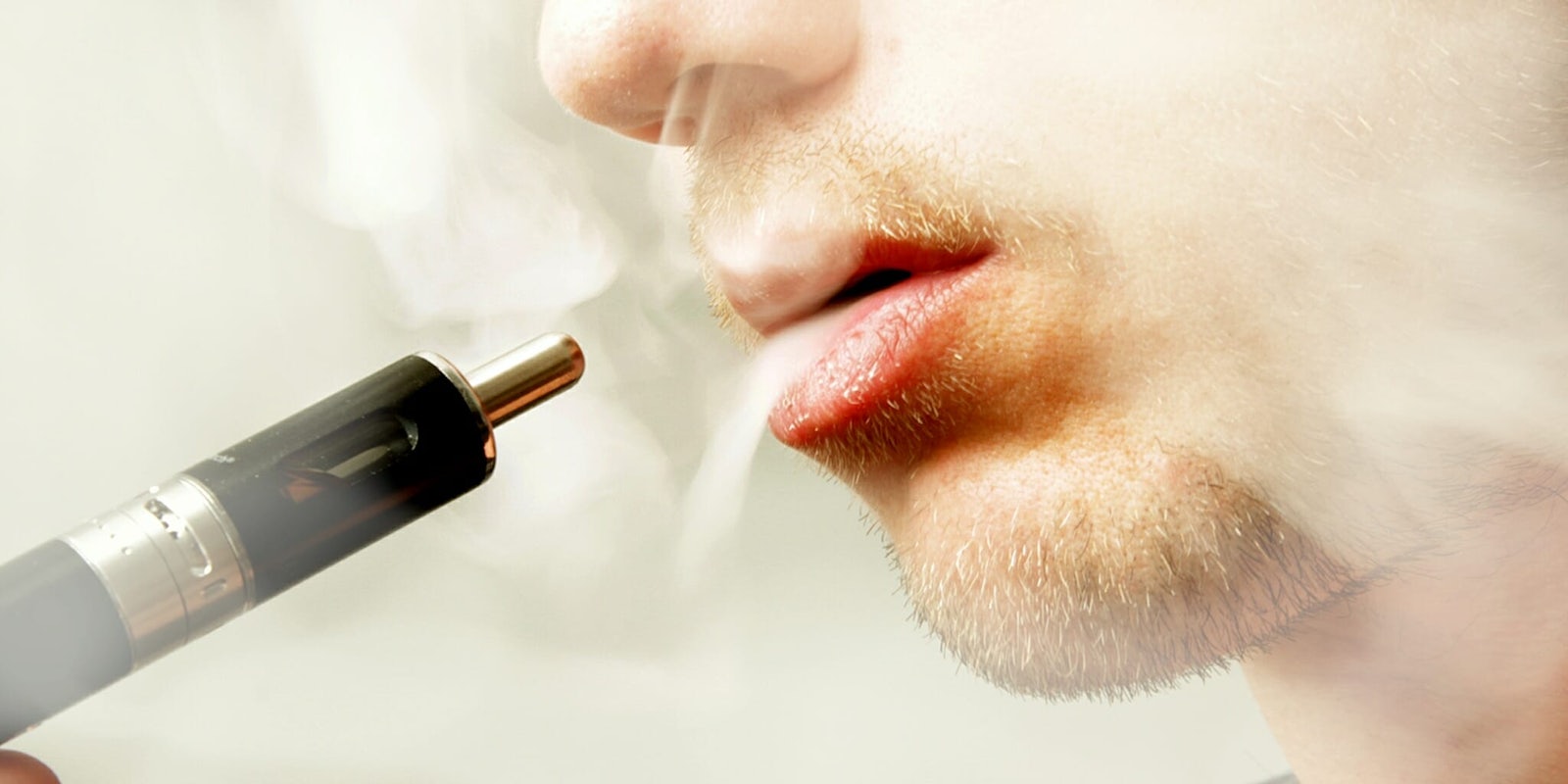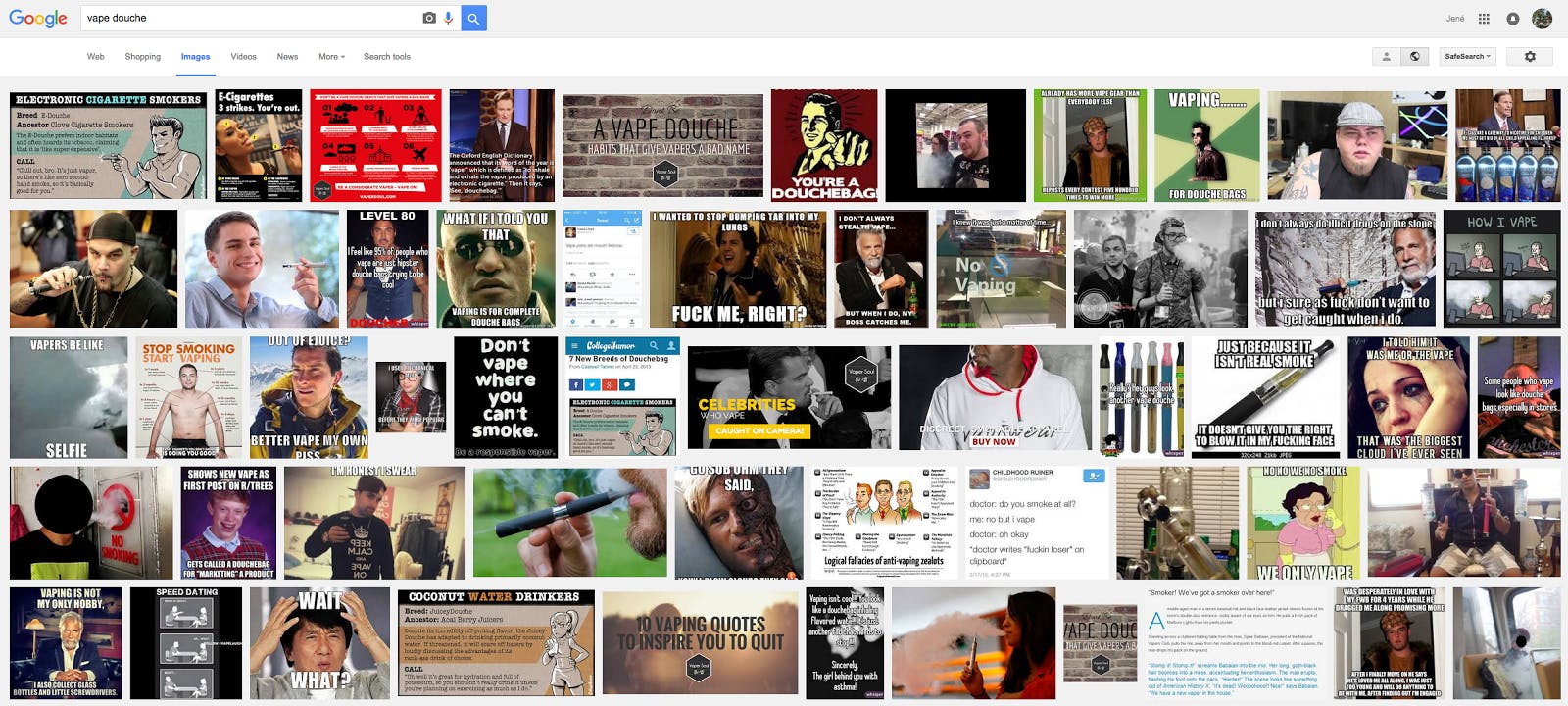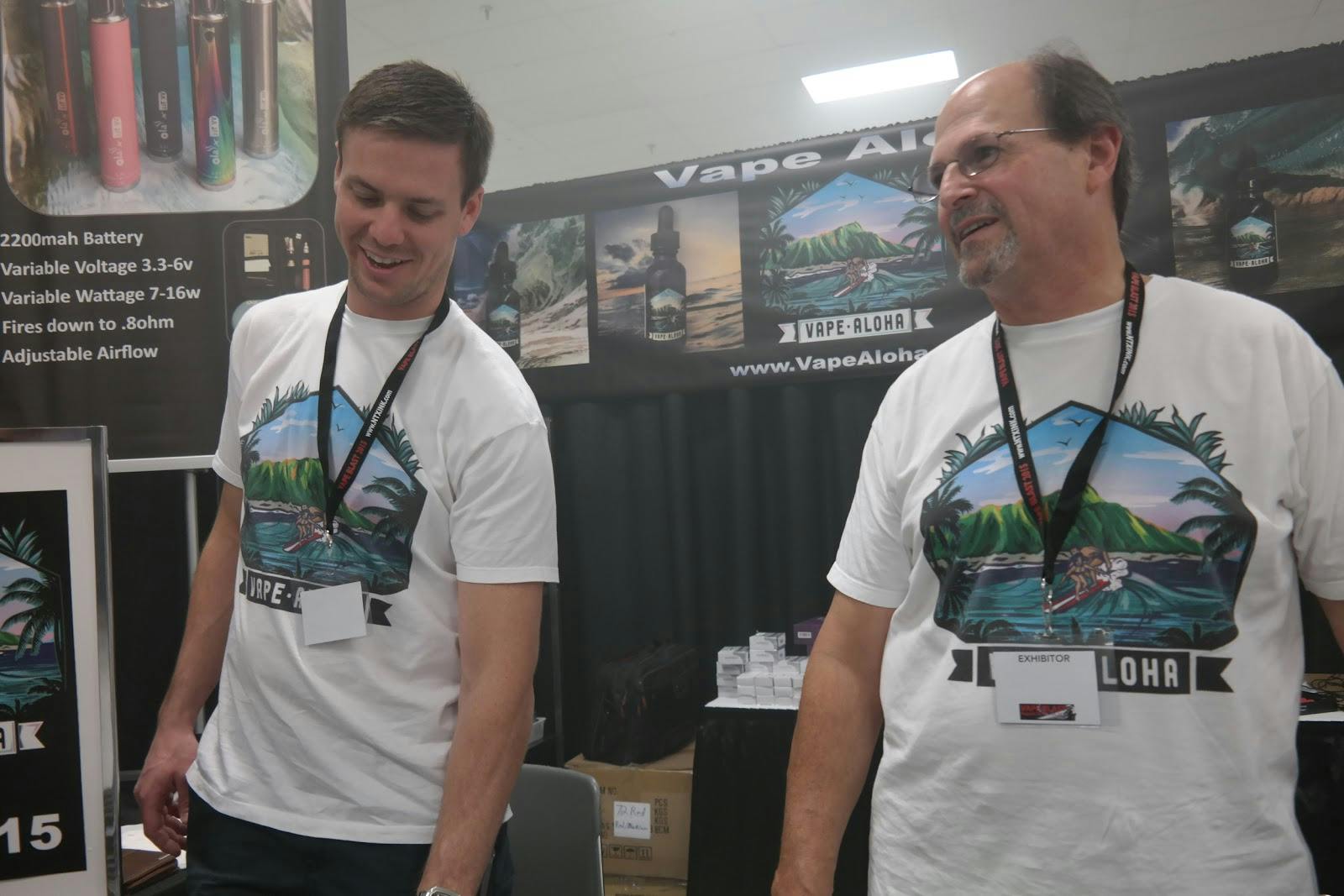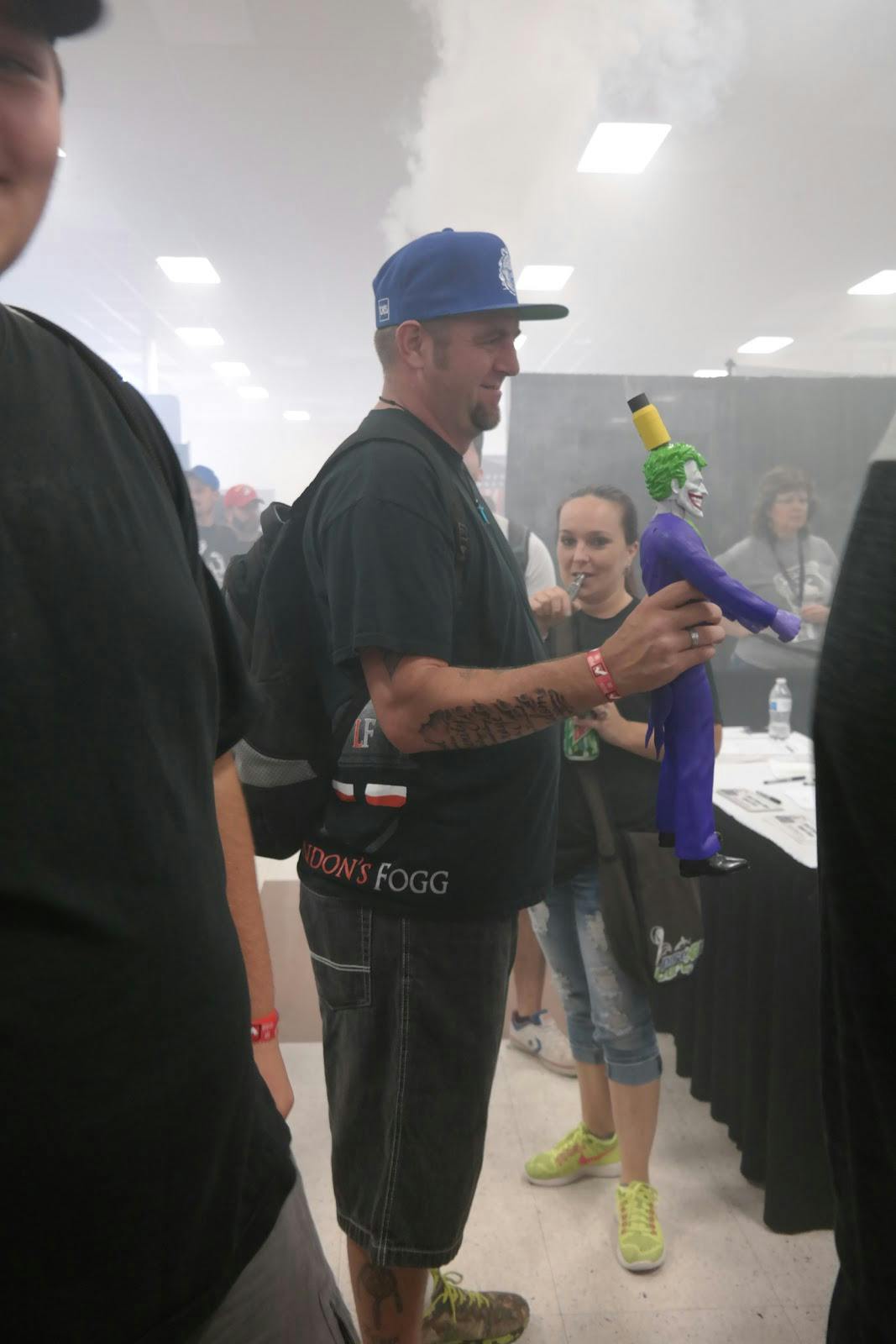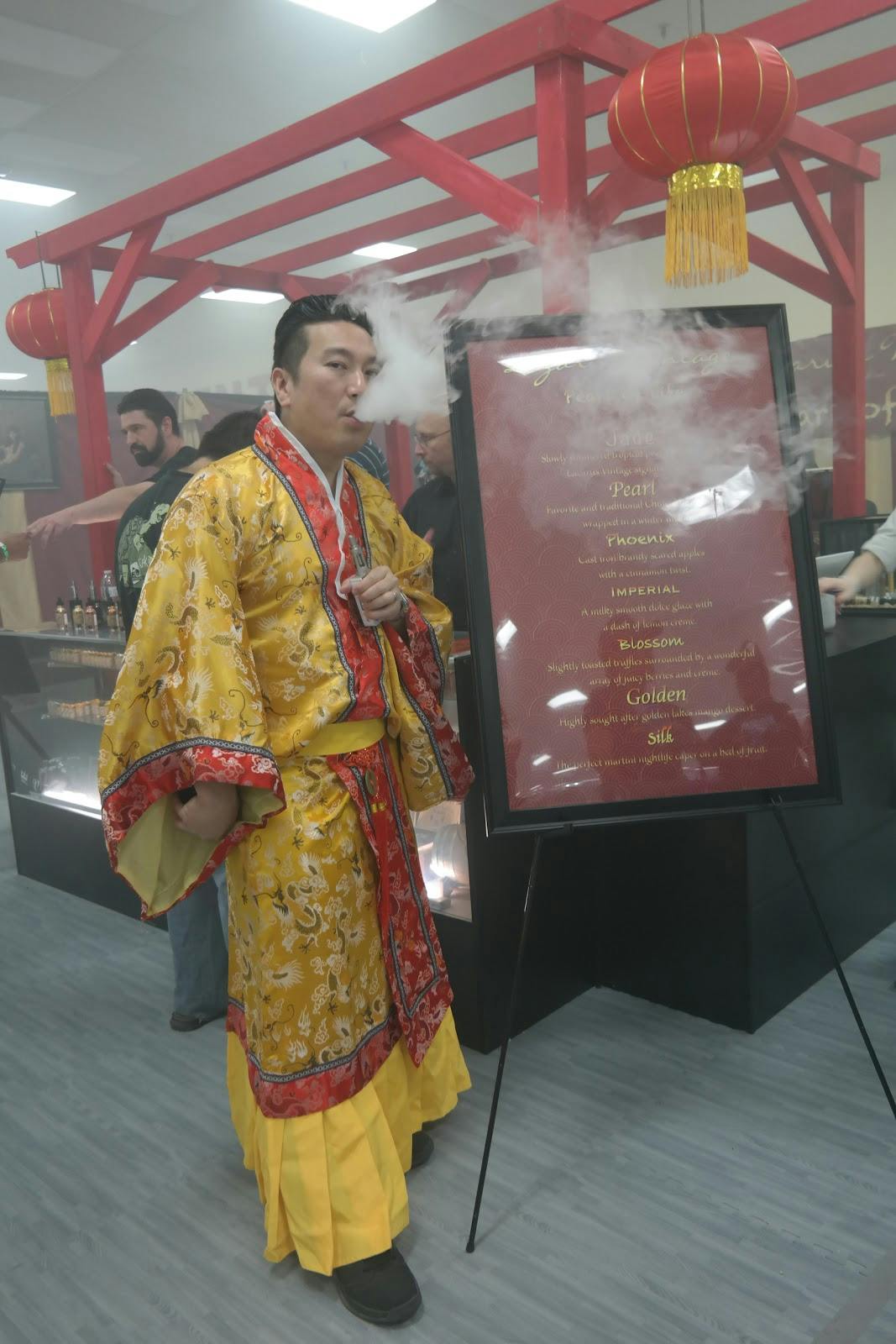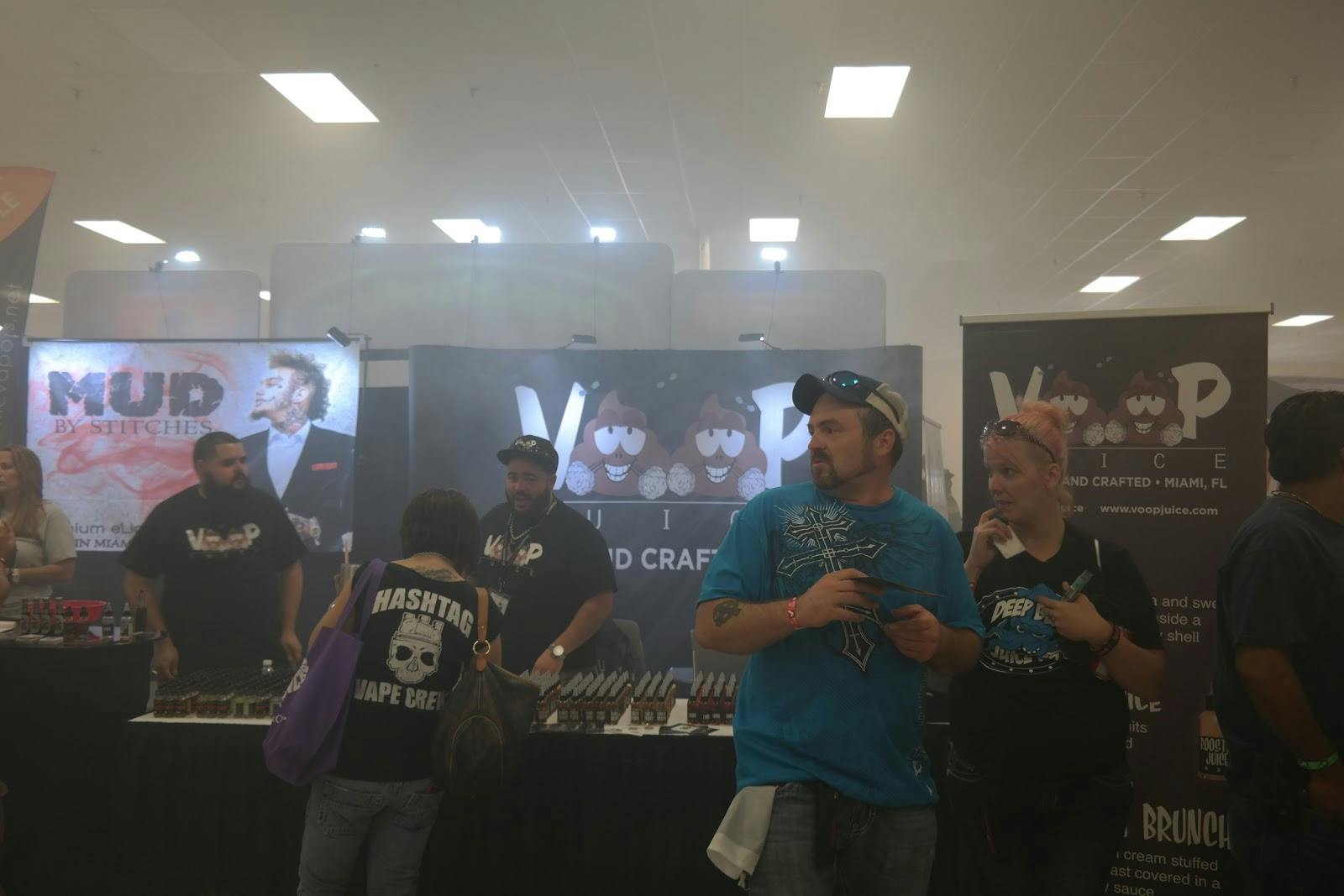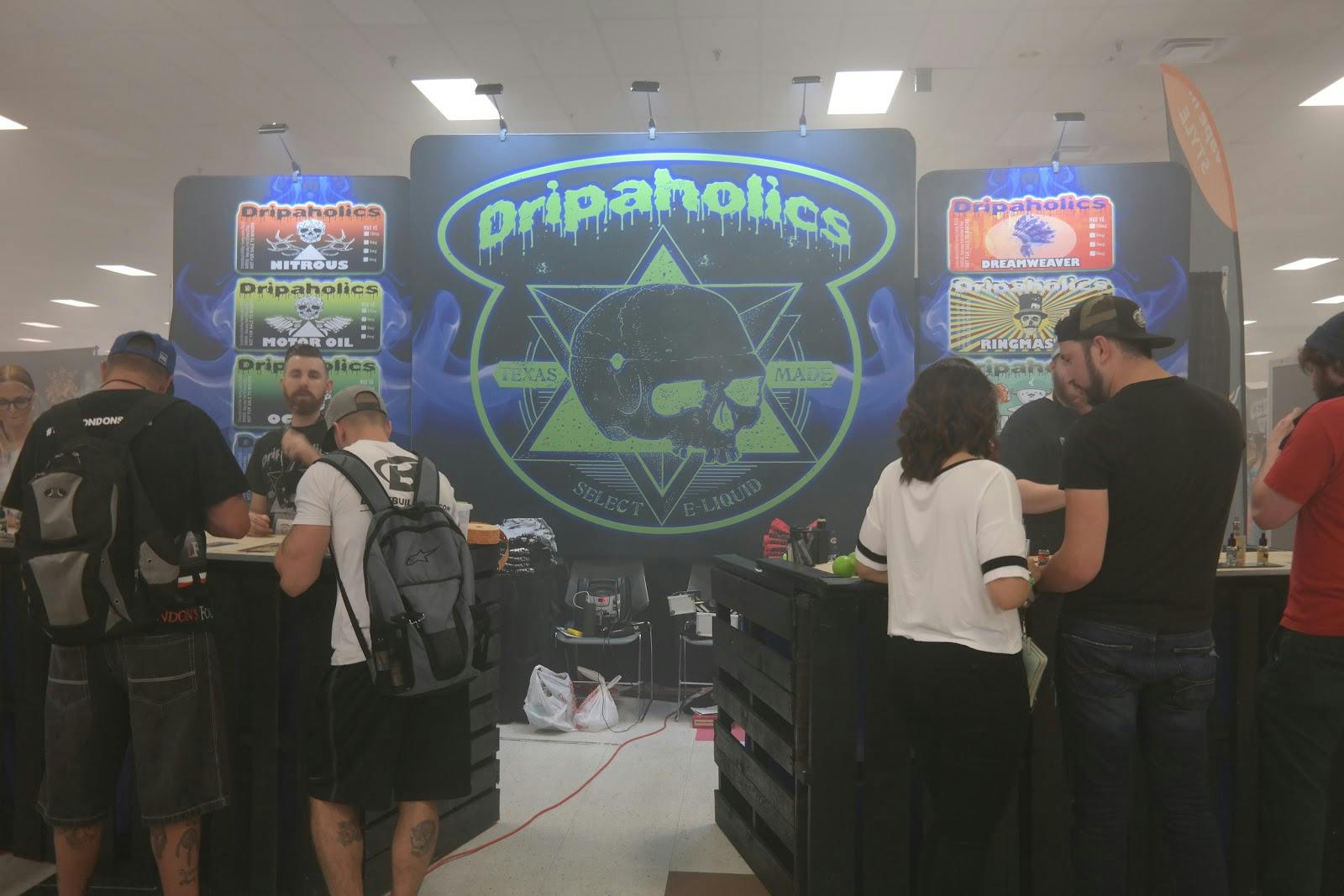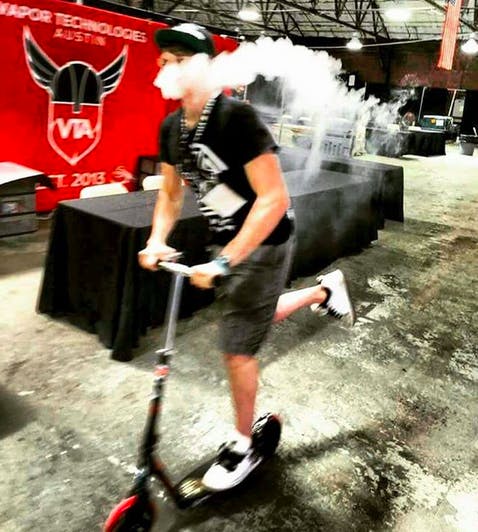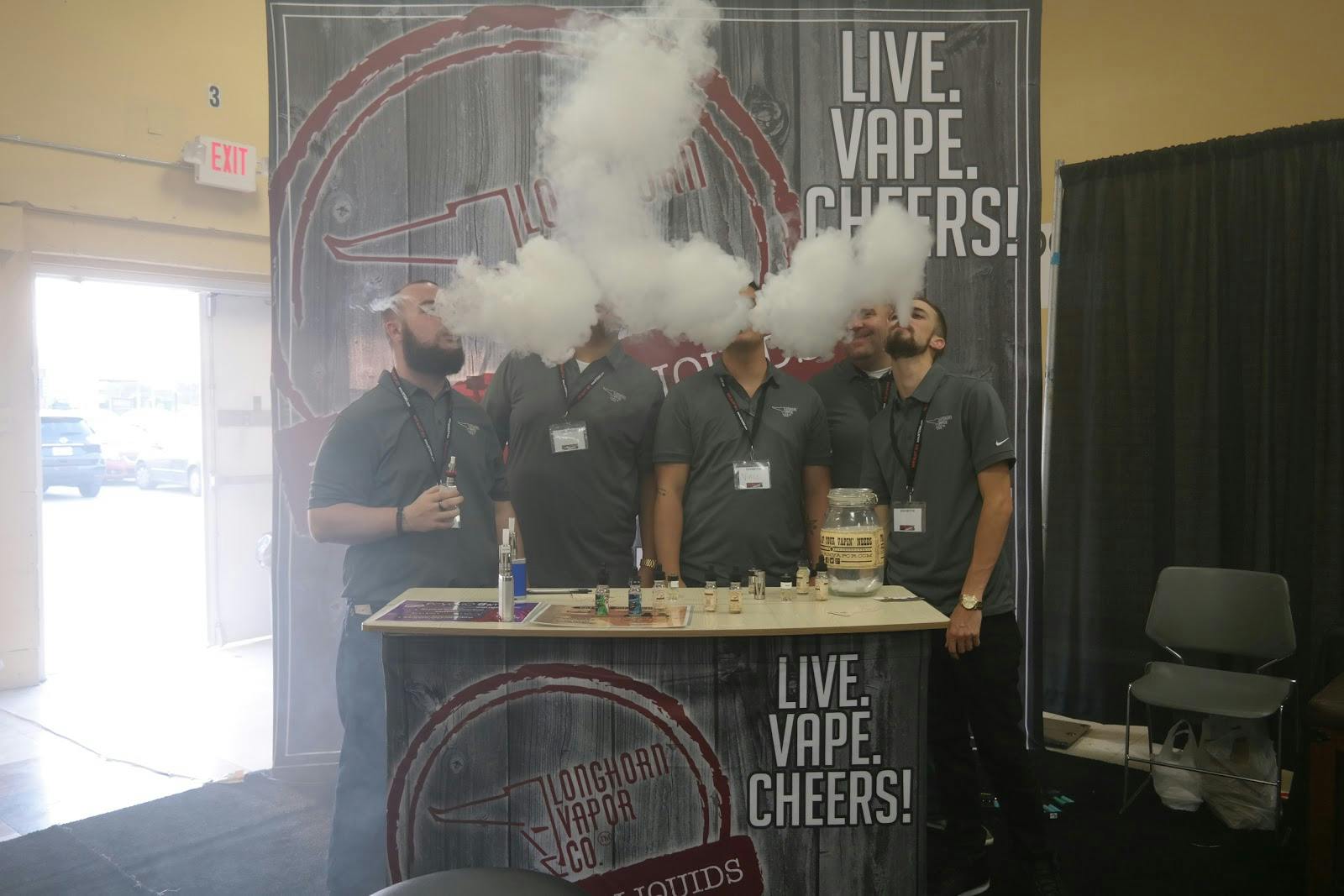What should one expect from something called VapeBlast?
If you’re like me, then you’ve mostly been exposed to negative representations of vapers and their lifestyle online.
As the name suggests, VapeBlast is an annual event that revolves around the vaping industry. For the uninitiated, vaping is the act of inhaling and exhaling the vapor produced by heating a propylene glycol or vegetable glycerin-based liquid, mixed with small amounts of nicotine and/or food-grade flavoring, using a small battery powered atomizer, commonly known as an e-cigarette or vaporizer.
Though some people use similar devices to consume THC, the active ingredient found in marijuana, “vaping” is generally used to describe an alternative tobacco consumption method that is supposed to simulate the experience of smoking; vapers generally wish to cut down on cigarette intake. But if you’re like me, then you’ve mostly been exposed to negative representations of vapers and their lifestyle online.
In addition to memes mocking the act, the industry also faces a David vs Goliath level uphill battle in terms of expensive regulations and taxes. And articles about vape culture’s “toxic masculinity” certainly don’t help its image. Though the most current and seemingly reliable study demonstrates that vaping is 95 percent safer than cigarette smoking, mainstream culture currently finds it 100% acceptable to mock these people, and so I, who knew next to nothing about vaping other than what the mainstream has fed me, approached a conference based around the act with an expectation for amusement: lots of people arrogantly vaping, bragging about the large clouds they’ve blown (I myself have perpetuated this negative representation by mocking their cloud competitions), and the general ridiculousness brought on by the mere fact of vaping.
https://twitter.com/jaygootz/status/638058838692786176
But, as my tweet succinctly puts it, I did not find the lulz I was looking for at VapeBlast. In fact, the whole event almost seemed to conspire against my judgmental assholishness.
As I stepped into the hazy, sweet-smelling sea of mostly white guys in black T-shirts, I was hopeful for the quality douche gold I was about to mine, but, unfortunately, my gradual transformation into empathetic human being began as soon as I stopped at the first booth. Vape Aloha was their name, and kindly and graciously explaining how to vape was their game.
I tried a Fruit Loops-inspired flavor, one of the more common flavors I saw floating around the conference. We talked about their other flavor options. They let me keep the rubber tip they gave me (just the tip, lol) to use on subsequent vape samples. I walked away pleasantly surprised at this first informative and positive encounter I had with conference attendees.
Cruising around the conference floor, I observed some images of intrigue, like this man holding a giant Joker vape:
And this Asian man who I hoped to every kind of god was not hired as a prop for a company owned by a white dude (Siiiigghhh, I think he was):
And company names that amused me:
Then I stopped at the Cloud Chasers Inc booth, where I met its 24-year-old owner, Kurt Loeblich. Loeblich’s name had been given to me by a vaper who read my cloud-chasing mock piece and wanted to help me, which I found endearing. Because I had found this photo of Loeblich on Facebook before the event, I thought I’d be in for a real douchey treat:
But of course, the professional vaper couldn’t have been more charming as he explained how he ended up in this line of work. It all started two years ago, when his girlfriend gave him an ultimatum. Before vaping, Loeblich smoked two packs of cigarettes a day. And every one of his grandparents had died of lung cancer. It took him 10 days to switch to vaping, and though he has the occasional cigarette lapse, vaping has largely replaced smoking for him.
There was no cloud competition due to an incident last year at VapeBlast when an irresponsible spectator’s device exploded.
Loeblich’s company started out as a Facebook page to promote the safe use of vaporizers for people who wished to modify their devices to blow larger clouds of vapor. After writing the piece mocking cloud-chasing, I was excited at the possibility of witnessing one of these cloud competitions firsthand. However, as Loeblich explained, this year there was no competition due to an incident last year at VapeBlast when an irresponsible spectator’s device exploded. Accidents like this are disheartening for the industry’s image, but also underscores the importance of Loeblich and his company within the community.
Initially flummoxed by the idea of cloud-chasing, beneath the soft and hazy light of the vape conference and among its transparent and chill participants, this activity now seemed to be the natural result of the evolution of this culture—delving deep into the hobby aspect of vaping creates an even larger space for aspiring non-smokers to explore, giving them something to put more of their focus and energy into, however silly or juvenile this may seem to outsiders.
Eventually, the friend I’d brought along and I decided to take a break from the haze. Despite my sensitivity to smells, the vapor was actually not as irritating to my sensibilities as I’d anticipated. We stepped outside, ending up near the parking lot. While relating our vape-servations, we saw a man about 25 feet away approaching the event center who promptly belched, then excused himself, though to no one in particular (we were the only ones around). Did he excuse himself for our benefit? How unnecessarily polite of this gentleman! Not at all the type of behavior I’d expect from any dude, much less the douchey vape bro of my own imaginings.
Not long after returning to the conference, a man called everyone to the center of the conference space, where a small stage stood. I rubbed my hands together like a stereotypical cartoon villain in anticipation of what I was about to witness. This’ll be good, I thought. After some meandering opening lines and talk of free swag that would soon be thrown out into the audience, the man introduced a woman by the name of Schell Hammel.
Schell knew her shit. She spoke in frank detail about legislation affecting Texas consumers and businesses (you can watch Hammel’s video update from June on YouTube). She encouraged everyone’s involvement in the vape community so they’d have access to knowledge and methods of fighting the opposition (comprised largely of tobacco companies). In addition to owning a vape store (The Vapor Bar), she is president of the Smoke Free Alternative Trade Association (SFATA) Texas Chapter and by all accounts, a passionate vaping activist.
“Our motto at The Vapor Bar is ‘It’s hard to quit… It’s easy to switch.’”
Hammel believes that people are averse to vaping and vape culture due to misinformation, misrepresentation, and fear. Hammel was raised by her grandfather in a smoking household and smoked for 24 years, her grandfather urging her to quit until the day he died of lung cancer. After losing three grandparents to the disease, Hammel’s decision to switch to electronic cigarettes proved so successful that she committed herself to helping others make the switch, never claiming it as a way to quit. “Our motto at The Vapor Bar is ‘It’s hard to quit… It’s easy to switch,’” she said. “There is a certain method and science in it to be successful, but definitely easy if done in the right manner.”
“I do believe that the large clouds [cloud-chasing] and ‘fad’ image has been a thorn in our side, but that is a very small percentage of our community,” Hammel explained in an email to the Daily Dot.
“This community is about finding a harm reduction solution to a habit that was once painted as glamorous, cool, and yes, even healthy for you,” Hammel wrote. “The passion you will find in this community is like no other, as it truly comes from the heart to help others in the same boat find the blessing they have found. If everyone saw it from their point of view, they would applaud them, rather than judge them.”
Hammel asserted that the ultimate goal of the community is to help people. “…[I]t is extremely frustrating to put your heart and passion out there for such a good cause to have it painted in such a negative light [by] media and legislators, based on preconceived notions and misguided information,” she noted. “With every hit on our community from the opposition in the media, we lose at least one smoker, and that just breaks my heart.”
Considering the sexism recently described by Mic and the fact that Hammel was one of the few prominent female figures at this conference, I also welcomed her unique perspective into the gendered aspect of the culture. My initial impression was that the L.A. vape scene is definitely not representative of the community at large, and especially not of the one represented in San Antonio, Texas. I witnessed no blatant sexism at this event. Certainly, no woman was being used as a prop in the way the Asian man above unfortunately was. Honestly, though, is this really the subculture to single out for transgressive progress in terms of casually racist and sexist representation? Not that it’s an excuse, but a subculture, as the name implies, is a product of mainstream culture and will therefore carry dominant representations along with it.
According to Hammel, though the vaping industry is indeed male-dominated, she doesn’t really find it much different from her corporate world experience. “I actually enjoy working with men, as I believe the balance between male and female perspectives adds diversity in finding new ways forward,” she said. “I have found very few unwilling to accept my opinion or views based on my gender—some yes, but very few.” Hammel maintained that her character is defined more by the fact of her commitment to the community as a transparent business owner than by her gender.
What Hammel and Loeblich did was confirm suspicions I had developed the moment I realized the conference was not going to provide me with much to ridicule. The issues the community seems to have (casual sexism/racism, image management) don’t appear to be specific to the the community itself, but rather expected from a subculture of its kind. I was reminded of pot culture (High Times, anyone?) or skate culture.
And it does seem that most subcultures are easy prey (see also: the condescension to those who are gluten-free or vegan) because people want to deflect the issues of dominant culture and pin blame, resentment, and ridicule onto its smaller factions. As a cyclist, I have observed that the majority of drivers take the actions of a few aggressive, law-breaking cyclists as a representative for the whole lot of us, and place judgment accordingly, with little to no empathy or understanding. Generally, people seem to view members of a subculture with skepticism; perhaps the general public thinks these members have a superiority complex, or that they are all trying to shove their lifestyle down others’ throats.
What’s the douchier move? Vaping? Or siding with tobacco companies on an anti-vaping stance?
Both Loeblich and Hammel agree that the most rewarding part of what they do is connecting with people who are proud that they have quit or significantly cut down on cigarettes. (Wow, what huge assholes they are, huh?) They didn’t become involved in the industry to show off by blowing large clouds of vapor or to start a trend —their involvement was the inevitable result of no longer having tolerance for their own smoking habit and what that habit had done to their family. Really, take a good, hard look in the mirror and ask yourself: What’s the douchier move? Vaping? Or siding with tobacco companies on an anti-vaping stance?
Before leaving, I sampled a few more flavors. I’d grown tired of all the sweet-tasting oils and was looking for something different. Longhorn Vapor Company was more than happy to oblige me with a tasty and smooth bourbon, almond, and vanilla blend called Lone Star. They even gave me free samples of this “juice,” totally unaware that I didn’t vape! I asked them to vape together so I could take a photo, and they happily agreed:
After we walked out into the parking lot to leave VapeBlast 2015, I sneezed. Before my friend could even address my sneeze, a man getting out of his car 30 feet away looked over his window and yelled at me: “Bless you!” As if the point hadn’t been driven home already, this strange man (Vape Jesus? Vape Pope?) had to bless me as I was leaving the vape conference. I thanked him and thought: OKAY WE GET IT Y’ALL ARE NICE BROS WHO HAVE SHATTERED THE FEDORA-WEARING VAPE BRO STEREOTYPE AND ARE UNDESERVING OF THE JUDGEY VITRIOL FREQUENTLY SPEWED YOUR WAY BY MYSELF AND MY PEERS.
In short: you will find shitty people and shitty ideas in every community. But I didn’t meet any during my short blast into the vape-o-sphere.
So here is my humble appeal to my fellow vape-judging brethren: Let’s admit that we were all wrong. Vaping, 95 percent healthier and 40 percent cheaper than smoking cigarettes, helps wean people off of an intense habit and naturally becomes an extension of their identity. So what? If this level of dedication to vaping is what destroys a dangerous addiction, then who cares? Looking down on vapers is basic and boring. They’re just doing the best they can, and are actually a less toxic presence because they vape—whether or not you want to admit it. Let those vapers blow, bro.
Photo via Ecig Click/Flickr (CC BY-SA 2.0) | Remix by Jason Reed

